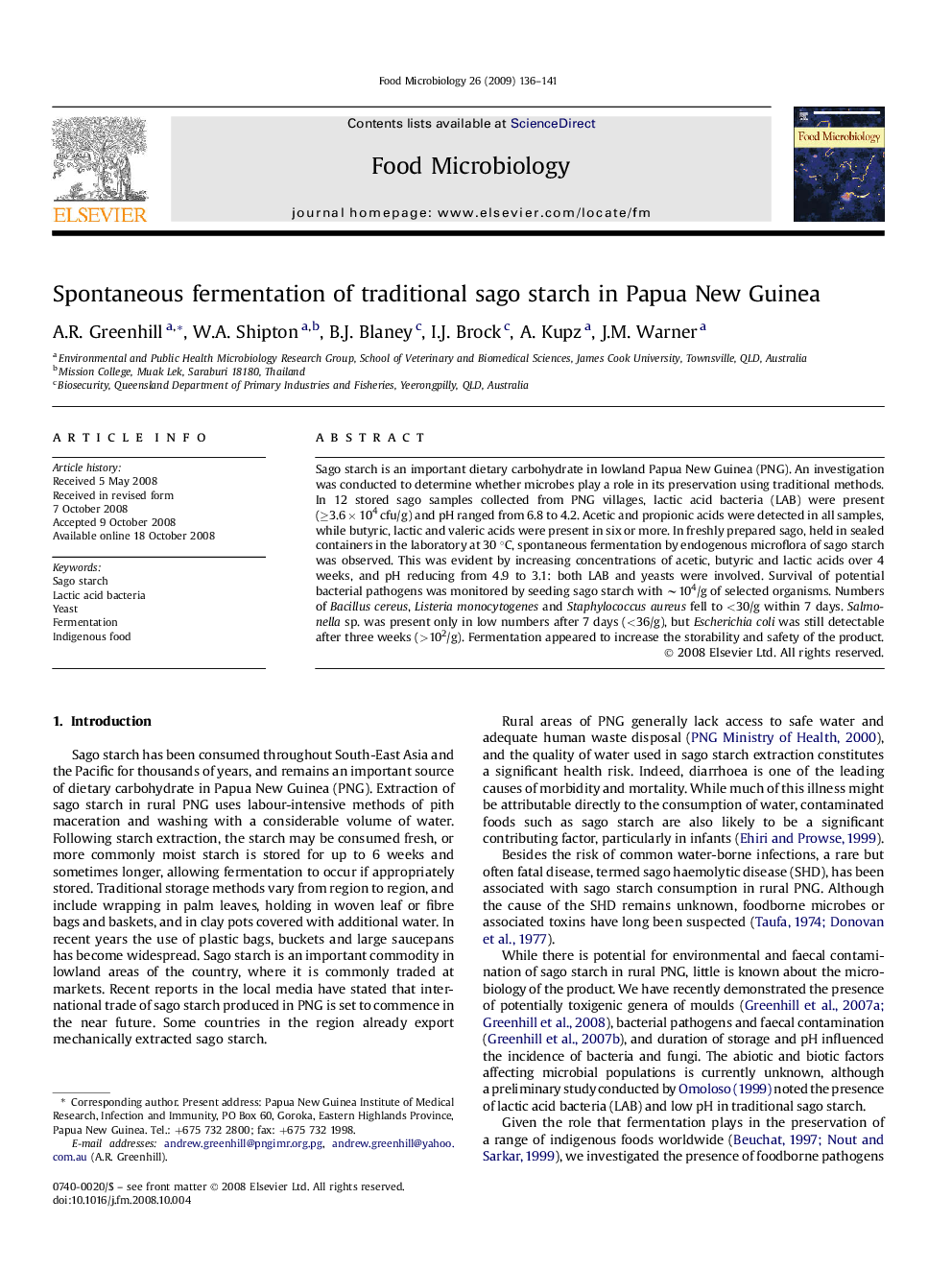| Article ID | Journal | Published Year | Pages | File Type |
|---|---|---|---|---|
| 4363626 | Food Microbiology | 2009 | 6 Pages |
Sago starch is an important dietary carbohydrate in lowland Papua New Guinea (PNG). An investigation was conducted to determine whether microbes play a role in its preservation using traditional methods. In 12 stored sago samples collected from PNG villages, lactic acid bacteria (LAB) were present (≥3.6 × 104 cfu/g) and pH ranged from 6.8 to 4.2. Acetic and propionic acids were detected in all samples, while butyric, lactic and valeric acids were present in six or more. In freshly prepared sago, held in sealed containers in the laboratory at 30 °C, spontaneous fermentation by endogenous microflora of sago starch was observed. This was evident by increasing concentrations of acetic, butyric and lactic acids over 4 weeks, and pH reducing from 4.9 to 3.1: both LAB and yeasts were involved. Survival of potential bacterial pathogens was monitored by seeding sago starch with ∼104/g of selected organisms. Numbers of Bacillus cereus, Listeria monocytogenes and Staphylococcus aureus fell to <30/g within 7 days. Salmonella sp. was present only in low numbers after 7 days (<36/g), but Escherichia coli was still detectable after three weeks (>102/g). Fermentation appeared to increase the storability and safety of the product.
